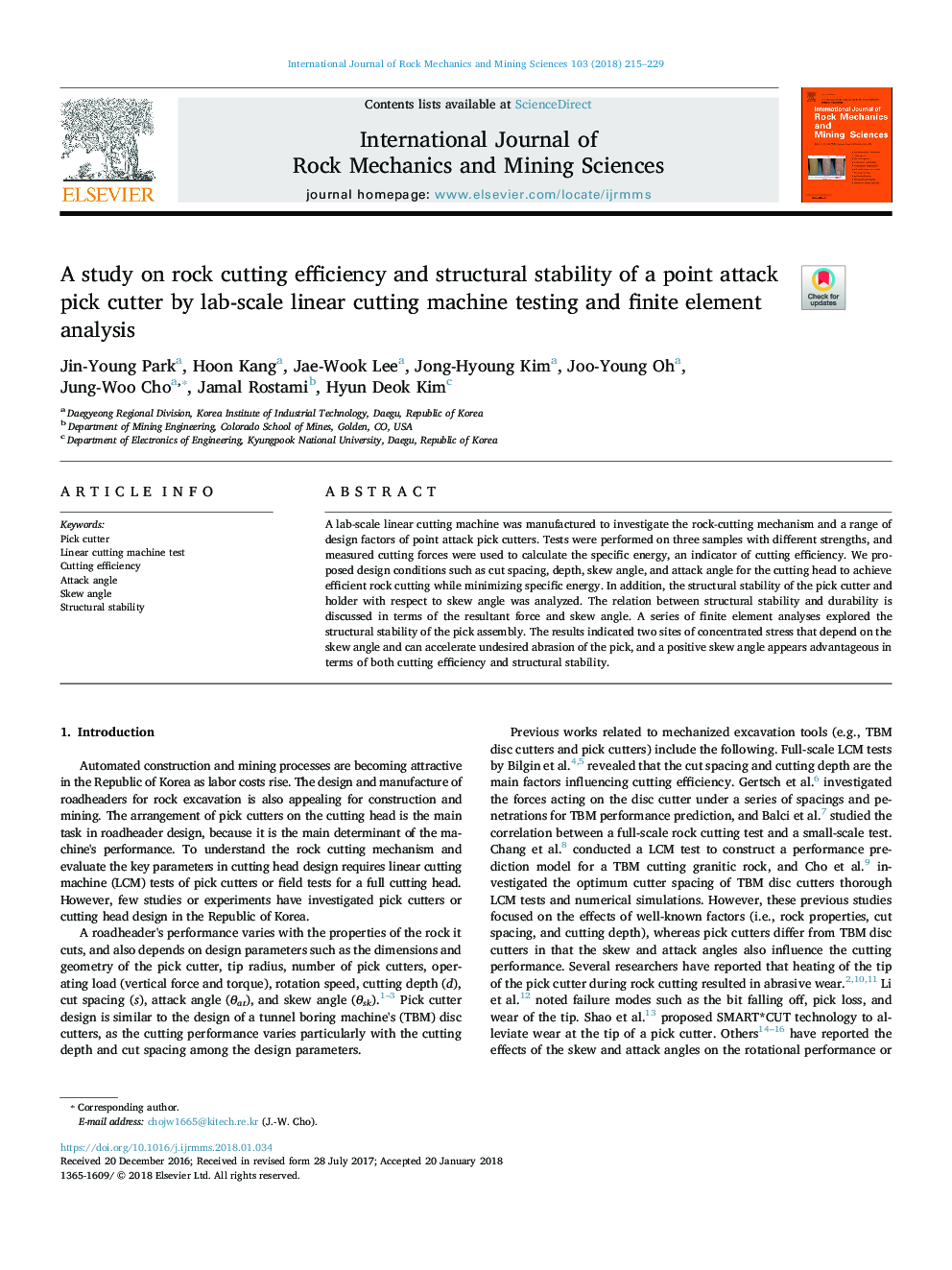| Article ID | Journal | Published Year | Pages | File Type |
|---|---|---|---|---|
| 7206344 | International Journal of Rock Mechanics and Mining Sciences | 2018 | 15 Pages |
Abstract
A lab-scale linear cutting machine was manufactured to investigate the rock-cutting mechanism and a range of design factors of point attack pick cutters. Tests were performed on three samples with different strengths, and measured cutting forces were used to calculate the specific energy, an indicator of cutting efficiency. We proposed design conditions such as cut spacing, depth, skew angle, and attack angle for the cutting head to achieve efficient rock cutting while minimizing specific energy. In addition, the structural stability of the pick cutter and holder with respect to skew angle was analyzed. The relation between structural stability and durability is discussed in terms of the resultant force and skew angle. A series of finite element analyses explored the structural stability of the pick assembly. The results indicated two sites of concentrated stress that depend on the skew angle and can accelerate undesired abrasion of the pick, and a positive skew angle appears advantageous in terms of both cutting efficiency and structural stability.
Related Topics
Physical Sciences and Engineering
Earth and Planetary Sciences
Geotechnical Engineering and Engineering Geology
Authors
Jin-Young Park, Hoon Kang, Jae-Wook Lee, Jong-Hyoung Kim, Joo-Young Oh, Jung-Woo Cho, Jamal Rostami, Hyun Deok Kim,
